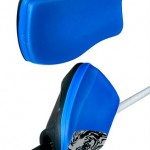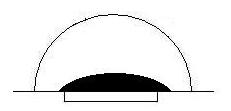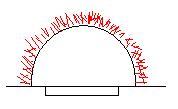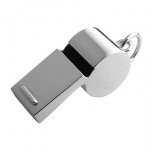Warming up is an essential part of getting ready before a game, so that the goalkeeper is prepared to deal with whatever the opposition throws at them. Without it, the goalkeeper would basically go into the game ‘cold’ without having done any preparation (making it easier to get injured). It would be like sitting an exam without having done any revision – you can’t expect to do well! By warming up, you make sure that your body is efficiently warmed up and you are mentally ready to stop shots, having just stopped some practise shots (in real life, it is harder to simply start stopping shots immediately after the game has started because you are not ready).
Top level goalkeepers are fortunate enough to have goalkeeper specific coaches who know how to work their goalkeepers properly. If you get to watch the pre-match practise before EHL games or international matches, you’ll be lucky enough to see the ‘professional’ and proper way of doing it; focusing on getting the goalkeeper ready for the game by building up the level of focus. Warming up is all about reaching the optimum level; peaking in time for the match, so that you are at your most alert and during the game.
Obviously it’s not a perfect world and not all of us are blessed with an understanding team or coach who will give us a proper warm-up. Warm-ups in some teams normally constitute players just smashing the ball at you for a bit before the game starts! This is not the best way to prepare for a game, but can be resolved if you apply a proper approach and talk to your team mates about the importance of it.
Talk to your team
Sometimes teams can be a bit lax on giving their goalkeeper a good warm-up, but being the most important member of the team (they can’t win without you!), you should be able to bargain yourself a deal. In order to get the best out of a warm-up and the time you have before the match, you need to communicate with your team about your needs. A chat to the captain to sort out arrangements will help things along. Having someone that is free to work with you is important, so try and find a member of the team who’d be happy to warm you up.
When to warm up
Warming up before a game is not the only time when you should warm up properly. There are other times when it is just as important to get an adequate warm up:
Before training
It is also important to warm up before training. The saying goes that . In order to make the most of training, you need to have had a good warm up to be able to put up a good percentage of shot stopping. Whilst the players are warming up before drills, you can take a player aside to get them to take shots at you. It might be possible to work with other goalkeepers; that way you can do more specific practise, like kicking to each other.
Between halves
If you watch international matches you will also notice that the goalkeepers will often warm up at half time, or just before the restart. Goalkeepers, like players, need to be warmed up to achieve peak performance. In the recent Champions Trophy games, I saw Korea’s goalkeeper warming up between halves to prepare for the second half. If you can, it is a good idea to get warm for the second half of the game; prepared to be in the action as soon as a shot comes your way.
Warming up on your own
Unfortunately sometimes your team isn’t kind enough to let you get a good warm up before they start drilling shots at you. If this is the case, then you will have to make do with warming up on your own. On the other hand, if you have kitted up and have some time to yourself between taking shots in the team warm-up, then you can use it wisely.
Here are some ideas:
- Take a spare ball and find a suitable place where you can practise kicking by kicking the ball back and forth to yourself
- Do some agility drills; doing foot work patterns to work on your shuffles and changes in direction
- Hand-eye co-ordination work; making sure you track the ball, you can do this by bouncing a ball off your glove/stick and trying to keep it up for as long as possible
Warm-up routine
Having a set routine is important to helping you warm up your body and mind. No matter the pitch or conditions (obviously playing away from home you will come across different pitch conditions), your routine will be the same and help you find a comfortable centre to help you relax.
The following is a routine generally used by international level goalkeepers:
- warm up generally (i.e. running, footwork) and stretch for about 15 minutes (working your entire body from head to toe, covering all areas)
- put on your lower padding (jock and shorts), kickers and pads and do further stretching
- start to bring in ball work, with players slowly knocking shots at the kickers, or throwing the ball lightly at you for you to block
- pad up completely, speeding up the shot and increasing the power
- work on shots around the body for you to reach in to cover
- round off the warm-up with some specific shots to work the reflexes; often quick-fire from balls lined in a row
- finish and enter the team drills of full stick and ball work and short corner practise
Pointers:
- Before you do the warm up, it is a good idea to go on a jog. This will help warm your muscles and increase blood flow.
- It is a good idea to start your warm up early, so you have enough time to be , before the team want to start taking shots at you in their drills. You therefore need to get there earlier than the team, or at least be ready early (when the team goes off on a jog to warm themselves up). 10-15 minutes is a good length of time to give you enough time to pad up and warm up.
Taking shots
The work out of taking shots needs to be progressive; starting off slowly and building up ball speed and power progressively. Distance affects your ability to react and stop a shot (the further away it is, the more time you have to react), so by starting with shots from a distance you can start out easily. You can then decrease the distance, having the shooter taking shots at least five feet away and reducing the distance again so that you have less time to react to the shot and work on quickening your reflexes.
Some teams normally have goalkeepers warm up away from the team in the corner/side of the pitch, as they jog and do basic stick work. Otherwise, if the goal is free, then you can go in the goal and practise from there; making it easier to focus on goals and prioritise .
Starting low
When taking warm-up shots to get your muscles working and blood flowing, you should start low. This allows you to get your body moving; stepping onto the angle and pushing into the save. As well as working on your angles and reaching out with your foot to block, it is also working on your footwork; getting you to work on moving across to get on the angle. Try to get equal shots to each side so that you work on equally practising possibilities of real in-game shots.
Shots in the corners
Taking shots to the corners is a good way of making yourself extend into the shot; forcing you to stretch out and try to reach the ball. By being having to extend into the save, you are stretching your muscles, which can become torn when making athletic saves to stretch across; if you end up facing few shots in the game. If the goalkeeper is warming up inside the goal, then the shooter should target the corners. If they are warming up outside the goal, then shots wide and outside their body will do the trick.
Raised shots
It is a good idea to work on raised shots as well. Again, start slow and then build up speed and power. To get a better work out, ask the shooter to get as high as reasonably possible, so you have to reach and/or jump up to block a lob. Having shots wide of you will also force you to stretch to reach the ball and even possibly high dive in to reach; forcing you to be active in your save making (i.e. as you may face such a shot on short corner drag flicks). Try to work each side, working your right hand as well as your glove to practise shot blocking with your RHP.
Have a good warm up!
Ultimately, a key part of game success is having a good warm up; building up to the optimum level and then maintaining it throughout the match. By warming up in this way, it helps you find a comfort zone and ease the pressure of facing a shot from the get go. Having warmed up properly, if you were to face a shot within the first few minutes of the match, it would not come as much of a shock because you had already practised and faced some similar shots beforehand.






